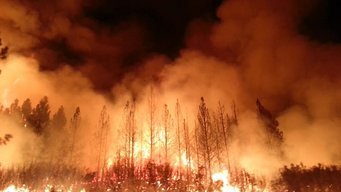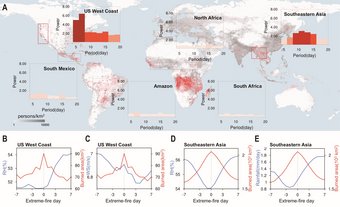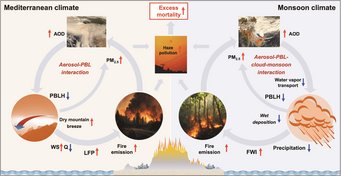Researchers deliver new insights in the complex interactions between smoke aerosols, weather and wildfire behaviors
Wildfires actively participate in the formation of fire-prone weather
Wildfires, as important natural disasters in the world, are not only a passive responder to climate change and extreme weather, but also an active and critical participant. The radiative effect of the smoke aerosols can change the weather, resulting in a positive feedback mechanism that significantly enhances extreme wildfire events in different coastal areas of the world. This is the conclusion reached in a study conducted by Professor Ding Aijun's team from the School of Atmospheric Sciences of Nanjing University in collaboration with Professor Meinrat O. Andreae from the Max Planck Institute for Chemistry and scientists from the University of California and Tsinghua University.
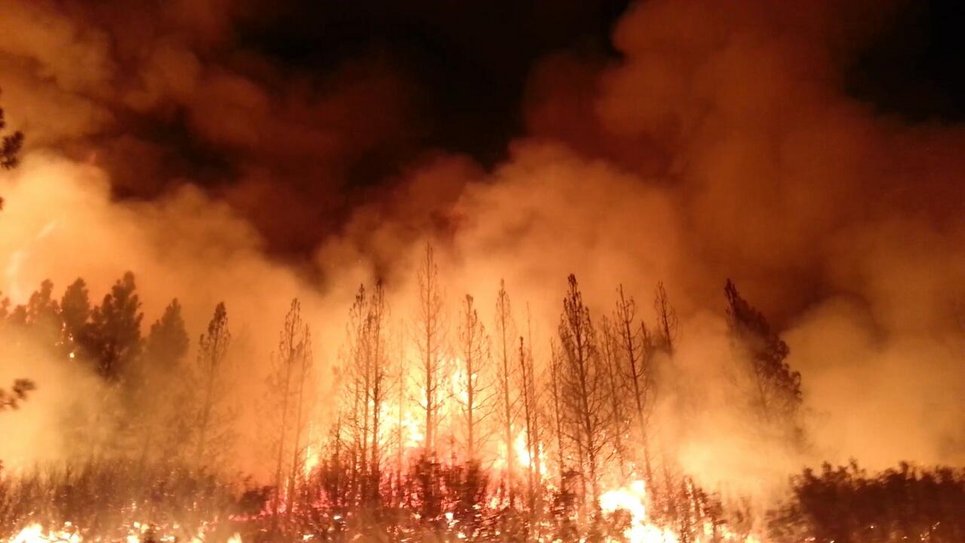
On 3 February, a paper entitled "Smoke-weather interaction affects extreme wildfires in diverse coastal regions" was published in the journal Science as a Research Article and was highlighted by SciPak.
Impact of wildfires on air quality, human health and Earth’s climate system
Wildfires directly endanger human lives and properties. The emitted pollutants have a negative impact on air quality, human health and ecosystems in downwind areas, and the radiatively important aerosols and greenhouse gases play an important role in the earth's climate system.
The evolution of wildfires in vegetation ecosystems is affected by many factors. In addition to human activities, natural factors such as meteorological conditions play an important role. Weather not only determines vegetation productivity, fuel dryness, and the length of fire seasons, but also plays a crucial role in the spread and evolution of fires. For this reason, the scientific community links the increasing frequency of extreme wildfire events directly to climate change. However, the frequency and intensity of wildfires exist on multiple spatial and temporal scales. Given that the general trend of global warming is difficult to change in the short term, it is crucial to understand the complex physical and chemical mechanisms and key control processes affecting the occurrence, development and extinction of wildfires within the current predictable timeframe, such as on the synoptic scale of 1-2 weeks. This way, people can actively respond and intervene on time to achieve wildfire prevention and mitigation.
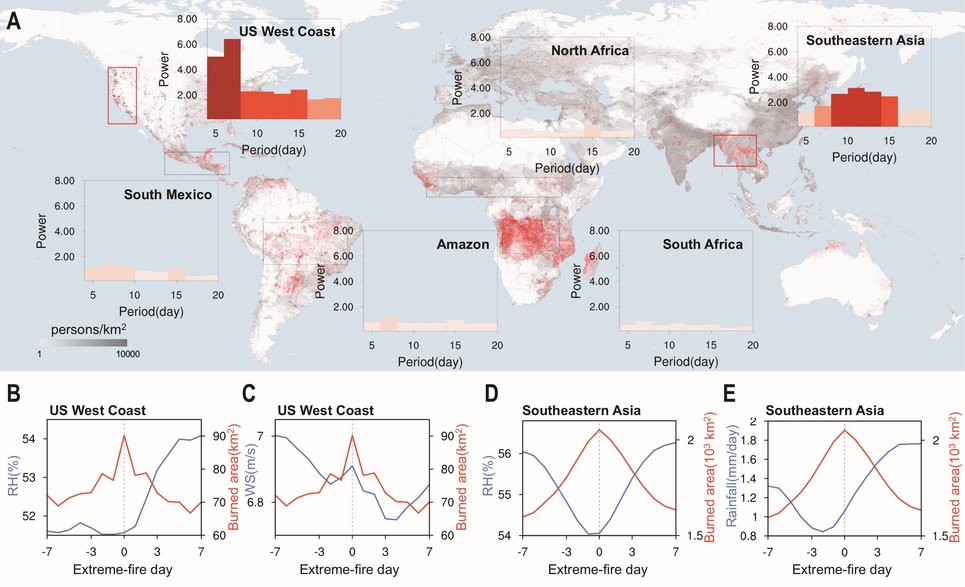
Fire-weather-feedback on the US West Coast and Indochina Peninsula
By analyzing satellite observations of different wildfire burning areas around the world over the past 20 years, the research team found that there were significant synoptic scale changes in wildfire burning areas in the West Coast of the United States and the Indochina Peninsula in Southeast Asia. The spectra were strongest on 1-week and 2-week time scales, respectively, with the former controlled by wind speed and humidity, and the latter mainly modulated by rainfall (Fig. 1).
The team further carried out meteorological-chemical fully coupled numerical simulations of the record-breaking “gigafire” event on the west coast of the United States in September 2020 and the forest fire in the Indochina Peninsula in March 2004. The researchers revealed the mechanism behind the different synoptic-scale variabilities of wildfires and master control factors in the two regions. It was found that in the Mediterranean climate regime of the western United States, wildfire plumes can increase the optical thickness of aerosols and enhance local thermal circulation (more hot dry mountain winds) through aerosol-radiation-boundary layer interactions which causes increased wind speed, decreased humidity and increased large fire potential in wildfire areas. Wildfire aerosol emissions are significantly enhanced, which leads to a sharp deterioration of air quality in valley cities (Fig. 2).
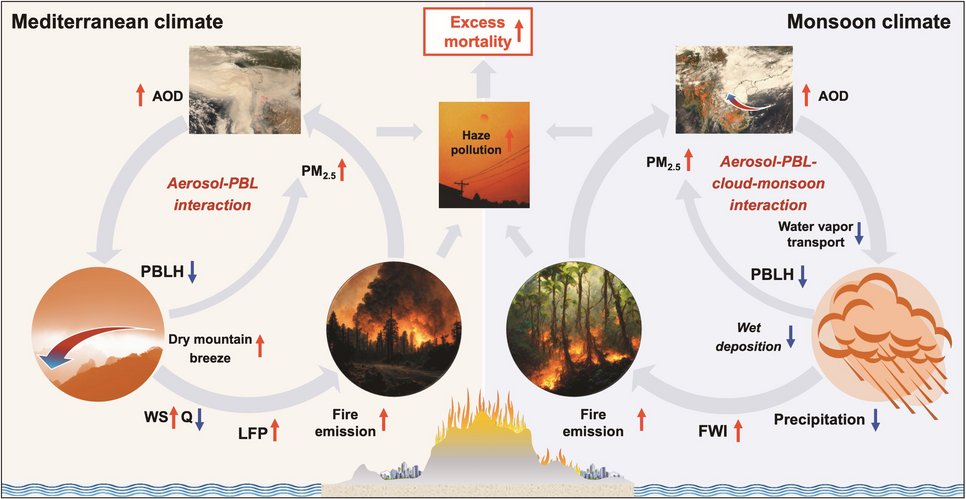
The article published in Science is an important breakthrough based on a number of previous collaborations between the teams at Nanjing University and the Max Planck Institute of Chemistry. The innovation of the current study lies in the discovery that wildfires are not only modulated by meteorological conditions in the traditional understanding, but also actively participate in the formation of fire-prone weather. The researchers were able to demonstrate that the smoke aerosols emitted by combustion can significantly change key meteorological parameters such as wind speed, humidity and precipitation that affect fire behavior through complex feedback processes. As a result, the spread of wildfires is enhanced, which leads to greater environmental health effects. The findings have important scientific impact on the prediction and early intervention of extreme wildfire events in densely populated coastal areas around the world. They are also expected to provide a practical approach for wildfire prevention and control in complex terrain areas such as western and northeastern China. At the same time, the results have important scientific significance and application value for air pollution prevention and control, weather forecasting, weather modification and climate change response in important regions of the world.
